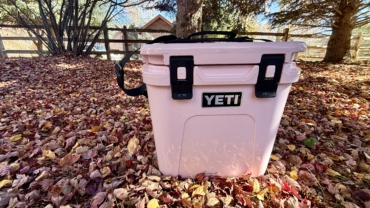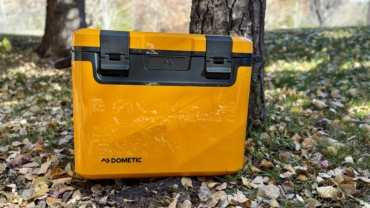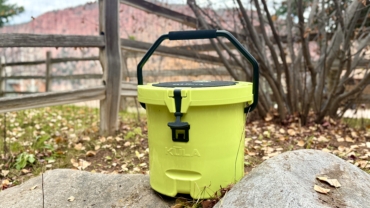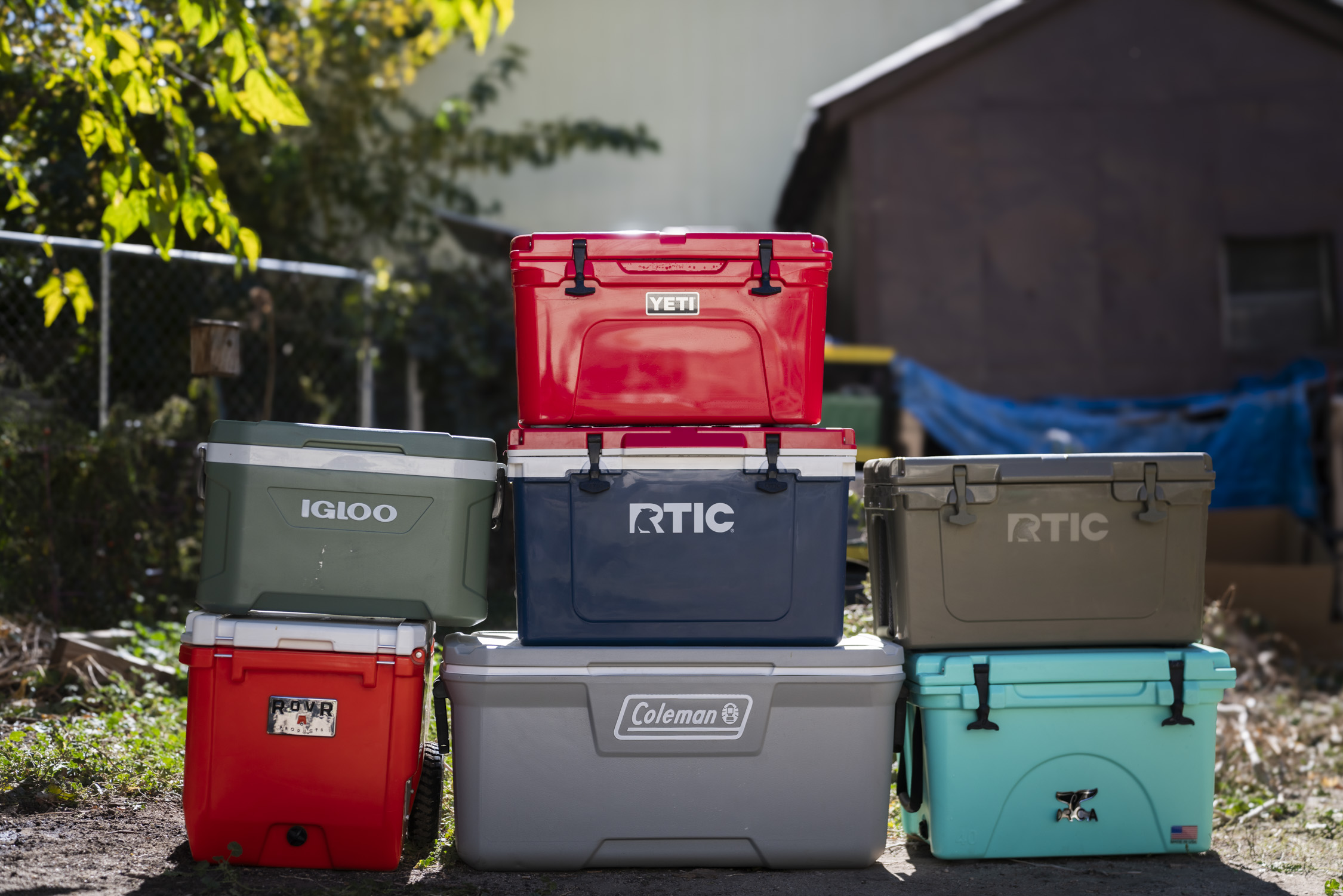There are a lot of great tents on the market. But the NEMO Dagger Osmo 2P and 3P tents solve universal issues with a new tent fly material that will make you want to buy this tent right now.
If you’ve ever woken up to a saggy tent fly, though you swear you staked it taut, it wasn’t your fault. Your fly, which is made of nylon, sagged in the night.
Most tent flys are made from lightweight nylon coated with polyurethane. But sine nylon likes to absorb water, it stretches, and it’s slow to dry.
To tackle these issues, NEMO developed a composite tent fly made with a weave of nylon and polyester. The two-tone fabric looks distinctive, feels extremely light, and has a sharp aesthetic. We received a first look sample to set up for a weekend of camping. Read on for our review of the new NEMO Osmo Dagger 2 Tent.
In short: It took NEMO more than 100 iterations to perfect its Osmo fabric, and from our testing, it’s pretty great. Not only does it let more light in than a solid green tent fabric, but it also stayed taut and dried quickly. NEMO made massive improvements on waterproofness and stretch, and it didn’t compromise on tensile or tear strength.
In addition to adding a great sustainability story, it’s a significant factor in the tent weighing 11 ounces less than the current Dagger 2 but staying just as tough.

NEMO Osmo Dagger 2 Tent Review
When you first set up the tent, you’ll notice the dual-colored strands. The green strands are nylon, and the white are polyester. This is the wünder material NEMO developed, what it calls “Osmo.”
Not only is this non-stretch, but it’s also quicker-drying and more water-repellent. Best of all, Osmo is also 100% recycled and, according to NEMO product development manager Gabi Rosenbrien, sets a new sustainability standard. And for those wondering, this fabric passes legislative requirements for being flame-retardant without the standard toxic chemicals.
Rosenbrien said it’s the first tent without a C6 DWR, the chemical treatment that promotes water beading and rolling that has recently been targeted as a bioaccumulating environmental pollutant.

The NEMO Dagger Osmo comes in a new structural rolltop tent bag that’s more oval than round. This left less dead space when I jammed the tent into a backpack. It also made the tent easier to share when my partner and I were splitting the weight.
Plus, the bag held its shape even when I pulled the poles. And those poles no longer come in individual plastic bags inside a waterproof fabric pole bag with a tie or cinch. NEMO worked with its pole manufacturer, DAC, to get rid of plastic there too.
Now, the protective pole bag that comes with all 2022 NEMO tents is undyed, uncoated, and sans excess hardware. It protects the poles and helps relay the lowly pole bag’s story — namely, that NEMO and DAC are working to eliminate 100,000 plastic bags.
In production, the Dagger’s pole bag uses zero water (for dyeing), 100% recycled polyester, and 1.6 recycled bottles. The end is sewn into a flap to keep the poles inside.

My Experience
When I set up the tent for the first time, then went to climb in, I actually exclaimed, “Yes!” when I discovered NEMO’s new one-handed Gatekeeper Clip, a toggle that keeps the fly rolled back. Gone are the toggle and loop. Instead, NEMO uses a claw-shaped clip that grips the toggle — and it’s a one-handed deal.
The tent door opens with two separate zippers, one that opens horizontally and one that opens on a diagonal. By using two zippers in place of one, NEMO built a door that’s easier to open and won’t snag. The design takes the stress off the zipper where it needs a round corner, which is where a lot of zipper blowouts happen.
The tent “Landing Zone” got another serious snort of approval from me. It’s awesome to have vestibule space, but when I leave gear in my vestibule, it inevitably gets sandy, muddy, or wet, because it’s in contact with the ground.
The removable bucket base Landing Zone offers a waterproof, clean, and dry base positioned under the tent fly. It was protected enough to hold electronics, a pack, or anything else I wanted outside the tent. It extended the weather-protected area of the tent without encroaching on my living space.
Snuggled down into my sleeping bag, I discovered another awesome NEMO invention. The Dagger Osmo has a “Nightlight” light-diffusing pocket. So instead of a blinding beam of light strobing around the tent when I suspended my headlamp from a clip at the tent’s apex, I could slip it into a pocket. This turned my blindingly bright white headlamp beam into a glow more conducive to winding down for the day.

Conclusion
At 3 pounds 3 ounces, the single-hub Dagger 2 tent isn’t the lightest backpacking tent. But it’s extremely livable, a tent I’d take backpacking, and a tent I’d use base camping. It’s roomy and light, and even though lighter usually means more expensive, in this case, the Osmo Dagger 2 price is on par with the current Dagger 2 (starting at $430).
Sadly, however, you can’t buy yours yet. The Dagger Osmo 2 and Dagger Osmo 3 will be available in spring 2022.







